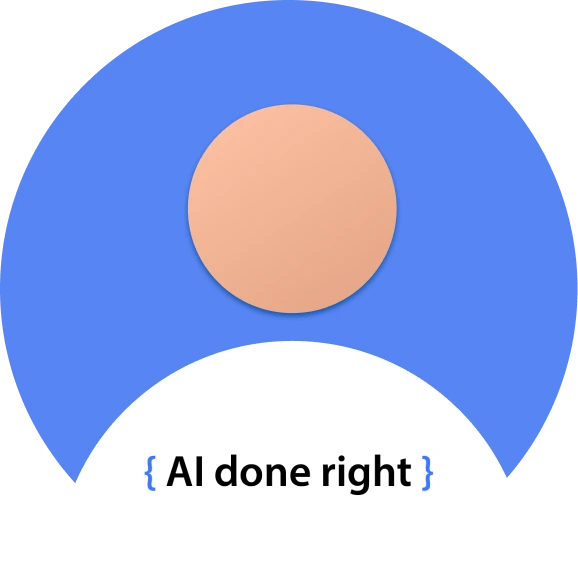|
Blog
Why Your Financial Services Enterprise Should Migrate from AutoSys to Cloud Composer
The ability to connect data, processing, and services is the foundation of the modern financial services enterprise. Achieving this connectivity in the most efficient, transparent, scalable, and cost-effective way is key to business stability, growth, and competitiveness, regardless of market or sector.
Without true workflow automation, the old aphorism “time is money” becomes literal, as a lack of agility, visibility, flexibility, and scalability carries heavy costs. If your enterprise has historically used AutoSys, you are likely seeing its limitations as a legacy tool.
Those limitations and their impact on the competitiveness of your financial services enterprise may lead you to consider a migration from AutoSys to Cloud Composer. This blog discusses some common pain points of AutoSys and how migrating to Cloud Composer can eliminate those challenges. While the focus is on financial services, these benefits of migrating to Cloud Composer are applicable across any enterprise sector using legacy AutoSys.
AutoSys vs Airflow : Why You Should Consider Cloud Composer for Workflow Automation
Connecting data, processing, and services efficiently is essential for financial services to stay competitive. Without proper workflow automation, the cost of inefficiency can be significant. If your enterprise still relies on AutoSys, you're likely facing its limitations as a legacy tool.
These limitations may prompt a migration to Cloud Composer. AutoSys has some pain points which Cloud Composer can address. While focused on financial services, the benefits apply across any sector using legacy AutoSys.
The first version of AutoSys hit the market in the mid-90s and remains heavily used in the financial sector. Despite its continued use across various sectors, its user base is dwindling, and it has limited updates, making it somewhat inflexible for today’s cloud and digital enterprises.
Cloud Composer is a managed Apache Airflow service that helps you create, schedule, monitor, and manage workflows. There are significant differences between Cloud Composer and AutoSys. A closer look shows why it may be a good time to consider an autosys to cloud composer migration sooner rather than later.
Why You Should Migrate to Cloud Composer
Cost Savings
AutoSys is a highly structured, license-heavy application with inherent complications due to its legacy status. More importantly, its future likely holds few substantive upgrades. This poses a significant problem for enterprises that must manage unsustainable IT maintenance costs and address a skills gap in managing the system.
AutoSys operates on a license-based model, with a fee attached to each new job, adding extra costs when scaling up. Cloud Composer, however, uses a usage-based fee model, meaning you are only charged based on the amount of resources you use as your jobs scale up.
Techolution recently collaborated with Google on a proof-of-concept (POC) project to migrate legacy AutoSys to Cloud Composer for an education partner. Education, like the financial sector, still heavily relies on AutoSys. The POC revealed several major benefits of Cloud Composer over AutoSys, starting with lower costs.
The cost analysis for this education partner project showed that Composer is at least 45 percent cheaper, based on historical GCP Cloud Composer project data. This is because the Composer usage model calculates costs based on the number of machines needed to meet job scalability targets and run data orchestration pipelines.
These costs were derived from this education partner's migration use case, where upscaling was the primary goal. However, we can estimate similar cost savings across other Techolution-led workflow automation with cloud composer projects in various sectors.
Large and Growing Pool of Experts at Competitive Salaries
Personnel costs for admin and support teams represent another significant area of cost savings with Composer. AutoSys uses Job Information Language (JIL) for programming, along with Shell scripting. These factors make it difficult and expensive to run and maintain AutoSys because it is challenging to program and execute tasks in that environment.
Costs escalate when you need to replace your AutoSys experts who know JIL. The pool of JIL experts is dwindling as fewer new programmers learn the language. This scarcity places the remaining experts in higher demand, resulting in higher salaries—if you can find them when needed.
Composer, based on the ubiquitous Python language, offers greater flexibility and a growing pool of affordable experts. Python and Java also provide more efficient tools and technologies, which are not necessarily available or easily integrated with AutoSys.
Ease of Use, Integration, Transparency, and Error Tracking
Factors like ease of use and integration are always crucial considerations, as time is money in workflow automation across different industries. Cloud Composer has a clear advantage over AutoSys in several ways:
- The relative ease of learning Composer and its growing base of expert users contrasts sharply with AutoSys, which has a smaller pool of costly experts.
- AutoSys alerts are generally non-specific, requiring an admin to manage tracking problems with a task execution list for correction. The support team size is limited due to the JIL language and Shell scripting expertise required, reducing the number of people available to manage AutoSys and track errors.
- Cloud Composer provides specific alerts, allowing a broader IT support team to handle issues, reducing the overall time spent on job management and freeing IT support teams to focus on other projects. It also enables cloud usage by more personnel who have little or no coding experience.
- Unlike AutoSys, Cloud Composer offers full integration capabilities across any cloud platform or on-premises data center. Cloud Composer provides more integration tools through Airflow, aimed at data pipelines with all the necessary tools.
The originators of AutoSys did not design it specifically for a cloud-native world, where most tools are cloud-native. Although you can run AutoSys in the cloud, it offers fewer integration options, making pipeline management and scaling more challenging and less flexible.
It is crucial to remember that AutoSys is an application, while Cloud Composer is a web-based tool that abstracts Apache Airflow processes. This distinction is important for making workflows more reliable, transparent, and easy to manage, beginning with the user interface. AutoSys and Cloud Composer have very different approaches:
- The AutoSys GUI lacks a single source of truth, requiring users to navigate multiple screens to complete or manage a workflow process.
- AutoSys makes bug and error tracking difficult, with limited alert reporting. The agent executing each task handles error reporting. It will inform the server of an error but not specify the error due to its lack of true integration.
- Cloud Composer offers a centralized approach via its web-based command-line UI. This approach eliminates the time and effort needed to execute a task and diagnose issues if a task fails.
- Cloud Composer includes tools that simplify workflow management, even for those without coding or programming knowledge. It is highly visual and intuitive, allowing users to easily check the status of jobs on any platform.
Integrating AutoSys into a technology and cloud stack is challenging, requiring numerous manual processes to integrate tools that automate workflows or simplify management. Cloud Composer automates these integration and management tasks, facilitating the integration of other services with many template-based open-source tools.
Scalability
Ease of scalability is a significant differentiator between AutoSys and Cloud Composer:
- AutoSys does not provide automatic scaling, necessitating the provisioning of additional machines for heavy data workloads.
- Cloud Composer 2.0, in sync with Apache Airflow 2.0, provides autoscaling that dynamically scales servers up or down as needed, delivering greater cost efficiency and savings by eliminating unnecessary resources (over-provisioning) once a job is complete.
Even when migration becomes necessary with your AutoSys workflow automation application, you face challenges related to personnel, expertise, and discovery across the legacy AutoSys application. Equally important is having experts who are also knowledgeable about Cloud Composer, which often requires partnering with a specialist to support the migration.
Choosing the Right Partner for an AutoSys to Cloud Composer Migration
Every migration project brings unique challenges, and migrating from AutoSys to Cloud Composer is no exception. While we have outlined some benefits of cost savings, scalability, and expertise with Composer, realizing these benefits requires an experienced cloud migration partner.
Techolution has assembled a team of experts in all aspects of
cloud services with deep experience in the financial services sector. While Techolution is a Google Cloud Premier Partner, it also brings extensive knowledge of AWS and Azure. This cloud-agnostic approach allows them to deliver the right solutions tailored to the business outcome needs of every enterprise in financial services and beyond.
By working on a fixed-bid model, Techolution delivers projects within budget while dedicating any number of experts required for success, including projects necessitating deep AutoSys experience.
To speak with an expert and learn more about why Techolution should be your migration partner, Get in Touch with Us.

